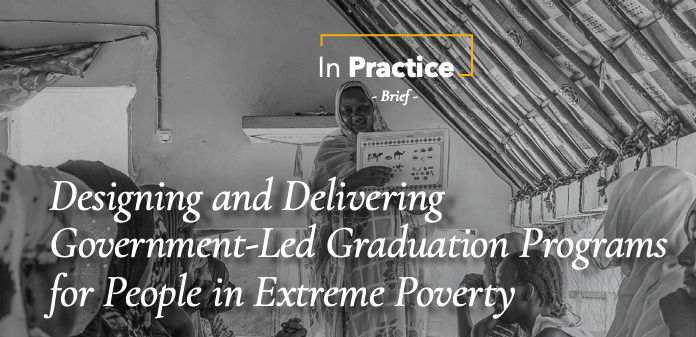In Practice Brief: Designing and Delivering Government-Led Graduation Programs for People in Extreme Poverty
By Anu Kumar • February 22, 2023 • 1 minute read

Maxwell Gollin, Carolina de Miranda, Taddeo Muriuki, Steve Commins
While governments face significant obstacles in designing and delivering approaches for people living in extreme poverty, a substantial body of research shows that programs can achieve transformative impact by addressing the socioeconomic barriers that often exclude this population. An increasing number of governments are adopting and scaling economic inclusion programs, including Graduation programs, to address the multidimensional vulnerabilities of people living in extreme poverty.
The four pillars of the Graduation approach provide a framework for designing, delivering, and monitoring a program to break the poverty trap. Graduation programs consider multiple areas of deprivation and exclusion in identifying participants, designing and delivering interventions, and monitoring progress toward increased well-being and resilience. By integrating the Graduation approach into their poverty reduction initiatives, governments can increase the impact and scale of their initiatives by investing in the systems, processes, and capacities needed to reach those furthest behind and deliver multidimensional, timebound, and sequenced program interventions. Integrating Graduation programs with existing government systems can further improve cost-effectiveness. Tailoring programs to local market conditions and contextual socioeconomic vulnerabilities and opportunities faced by marginalized groups is also critical to successful implementation, as demonstrated by government-led Graduation programs Satat Jeevikoparjan Yojana in India, the Kenya Social and Economic Inclusion Project, and Prospera Família in Brazil.
Read the full brief here.

